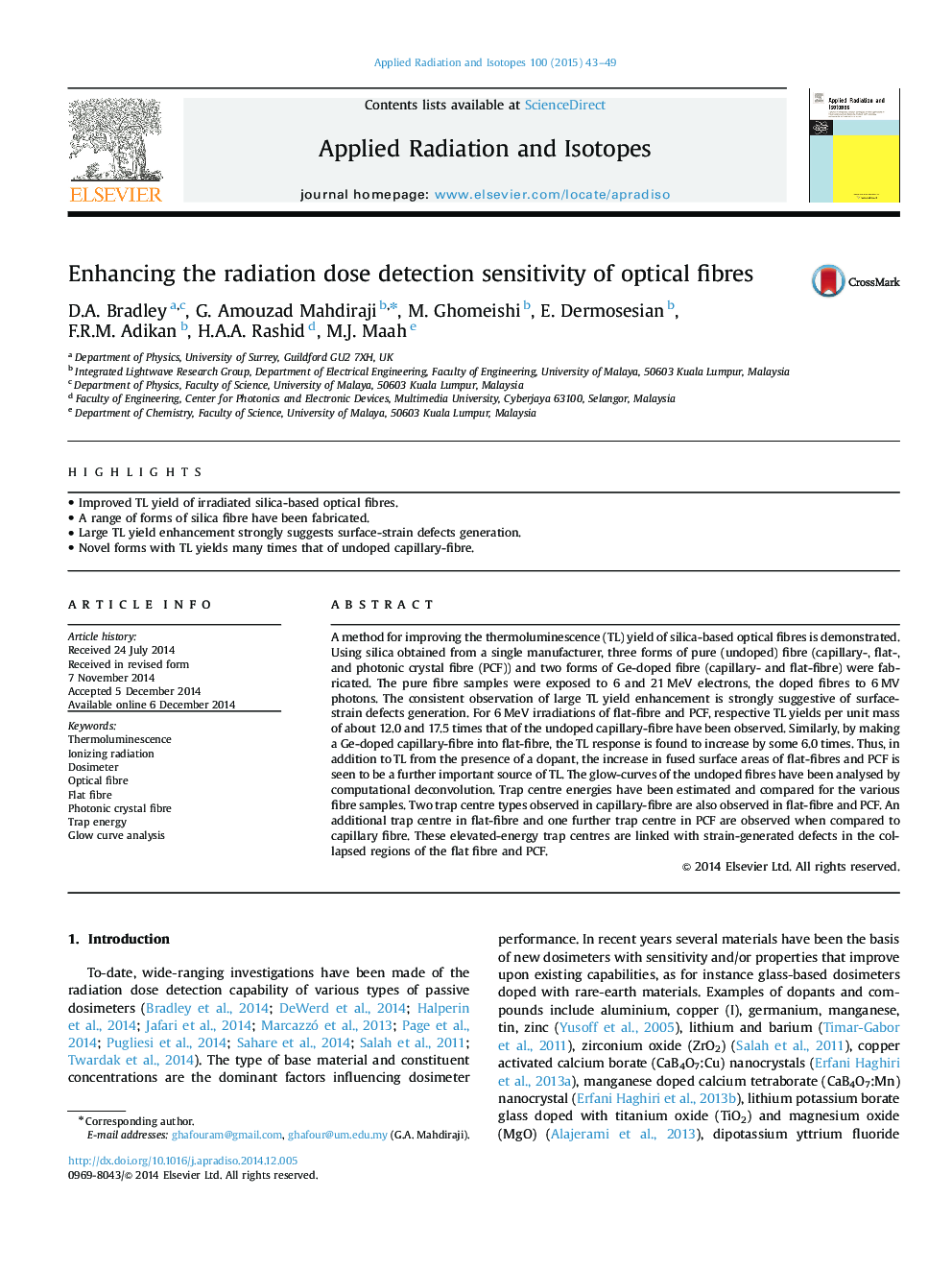| Article ID | Journal | Published Year | Pages | File Type |
|---|---|---|---|---|
| 1878984 | Applied Radiation and Isotopes | 2015 | 7 Pages |
•Improved TL yield of irradiated silica-based optical fibres.•A range of forms of silica fibre have been fabricated.•Large TL yield enhancement strongly suggests surface-strain defects generation.•Novel forms with TL yields many times that of undoped capillary-fibre.
A method for improving the thermoluminescence (TL) yield of silica-based optical fibres is demonstrated. Using silica obtained from a single manufacturer, three forms of pure (undoped) fibre (capillary-, flat-, and photonic crystal fibre (PCF)) and two forms of Ge-doped fibre (capillary- and flat-fibre) were fabricated. The pure fibre samples were exposed to 6 and 21 MeV electrons, the doped fibres to 6 MV photons. The consistent observation of large TL yield enhancement is strongly suggestive of surface-strain defects generation. For 6 MeV irradiations of flat-fibre and PCF, respective TL yields per unit mass of about 12.0 and 17.5 times that of the undoped capillary-fibre have been observed. Similarly, by making a Ge-doped capillary-fibre into flat-fibre, the TL response is found to increase by some 6.0 times. Thus, in addition to TL from the presence of a dopant, the increase in fused surface areas of flat-fibres and PCF is seen to be a further important source of TL. The glow-curves of the undoped fibres have been analysed by computational deconvolution. Trap centre energies have been estimated and compared for the various fibre samples. Two trap centre types observed in capillary-fibre are also observed in flat-fibre and PCF. An additional trap centre in flat-fibre and one further trap centre in PCF are observed when compared to capillary fibre. These elevated-energy trap centres are linked with strain-generated defects in the collapsed regions of the flat fibre and PCF.
